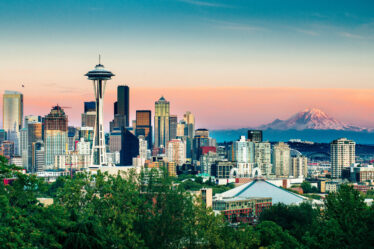
Summary
Lisbon, located at the westernmost point of the European continent, is a seaport city on the Atlantic coast. It is situated north of the Sintra Mountains and south of the estuary of the Tejo River. It is not only the capital of the Portuguese Republic but also the largest city in the country. As the political, economic, cultural, and educational center of the country, it is an important historical city in Western Europe, along with London, Paris, and Rome. Lisbon is divided into an old city built along the banks of the Tejo River, and a shaped city on the northern highlands. The city has undulating terrain and streetscaped streets, known in ancient times as the “City of Seven Hills”. The streets paved with local marble like dominoes, classical and elegant, colorful trams and cable cars, and tall and magnificent ancient buildings are the distinctive symbols of this city.
History
Since the Neolithic Age, the region of Lisbon has been inhabited by Iberians. In 205 BC, under the rule of the Roman Empire, Caesar upgraded this area to a city and named it “Felicitas Julia” (meaning “Congratulations to Caesar”). Due to the importance of its geographical location, it was occupied by the northern barbarians starting from the 5th century AD, and was even taken by the Moors from the Arab region in the 8th century. The Moors who believed in Islam not only built many mosques in the city, but also built many houses and new city walls. Under their rule, the city developed rapidly, and at that time, Christians, Jews, Muslims of different faiths also lived in the city. In 1147, Alfonso I led a crusade to defeat the Moors, and Christians regained control of the city. In 1256, Lisbon officially became the capital of Portugal, and from then on, it developed into an important trading city in Europe and the Mediterranean. In the era of geographical discovery, many famous navigators and explorers such as Da Gama set sail from Lisbon, leading their fleets to explore different parts of the world. In the 16th century, a large amount of gold was continuously transported back to Lisbon from the Portuguese colonies at that time, marking Lisbon’s entry into the golden age of urban development and becoming a commercial center for the wealthy side of Europe. In 1755, Lisbon was hit by a once-in-a-century earthquake, with earthquakes, tsunamis, and fires almost destroying the entire city and ports, causing a serious decline here, and Portugal’s national strength began to decline. In the 19th century, Napoleon invaded Lisbon and the Portuguese royal family collectively fled to Brazil. Cities have also been ravaged and ravaged by war. During World War II in the 20th century, Lisbon was one of the few open Atlantic port cities. In 1983, the monasteries of Berenta and Jeronim were awarded the title of World Cultural Heritage by the United Nations. In 1998, Lisbon held a World Expo with the theme of “Oceans, Future Assets”, which received a total of 10 million visitors within 132 days.
Culture
Lisbon is an ancient city with a long history, and its culture is extremely prosperous. It has many famous universities, libraries, museums, art galleries, opera houses, etc. The Lisbon National Library was built in 1796 and is the most abundant library in the country; The Lisbon Carriage Museum houses various royal carriages from the 16th to mid-19th centuries, perfectly reproducing the luxurious life of ancient royal nobles; The Guben River Foundation in Lisbon is known as Portugal’s Second Ministry of Culture, and its Guben River Park, Museum, Art Museum, and Concert Hall jointly form the largest cultural center in Lisbon.
Environment
Facing the Atlantic Ocean, influenced by the warm Atlantic current, Lisbon has a warm and humid climate, with no freezing in winter and no hot in summer. The average temperature in January and February is 8 ℃, and the average temperature in July and August is 26 ℃. Most of the year, it is windy and sunny, warm as spring, and comfortable and pleasant.
Religion
Lisbon has a tradition of worshipping Catholics, and there are many famous Catholic churches or monasteries in the urban area, such as the Jeronium Monastery, Lisbon Cathedral, and Saint Dominion. Due to the fact that Moors and Arabs have also lived in Lisbon in history, some residents here also believe in Islam.
Nation
In history, multiple ethnic groups have emerged in Portuguese territory, mainly including Iberians, Romans, Moors, and others. Over the long years, Celtic, Germanic, Jewish, Moorish, and other ethnic groups merged with each other. Later, the Catholic knights and nobles unified the country by force, forming a single ethnic state with Portuguese as the main body, coexisting with a few Gypsies, Jews, and Moors. In modern times, many people from other countries gradually migrated to Portugal, including many people from Eastern Europe (Ukrainian, Moldovan, Romanian, Russian, etc.) and Brazilians.
Travel timing
Tourism season
Lisbon has a typical Mediterranean climate, mild and comfortable. This is a lucky city, not frozen in winter and not hot in summer, but strongly influenced by the North Atlantic Warm Current.
Spring (March May): With abundant sunshine, less rainfall, and cool evenings, the average temperature ranges from 10 to 27 degrees Celsius, with April being the season with slightly more rainfall.
Summer (June to August): Dry, hot and humid, with abundant sunlight and occasional showers, with an average temperature of 16 to 36 degrees Celsius. This season is also the peak season for tourism, and tourists should take appropriate measures to prevent heatstroke and sunscreen.
Autumn (September November): Sunny, mild and pleasant, the most comfortable month of the year, suitable for travel, with an average temperature of 8 to 23 degrees Celsius.
Winter (December to February): Rainy and slightly cold, often accompanied by heavy rain, which can cause inconvenience to travel, with an average temperature of 0 to 18 degrees Celsius.


